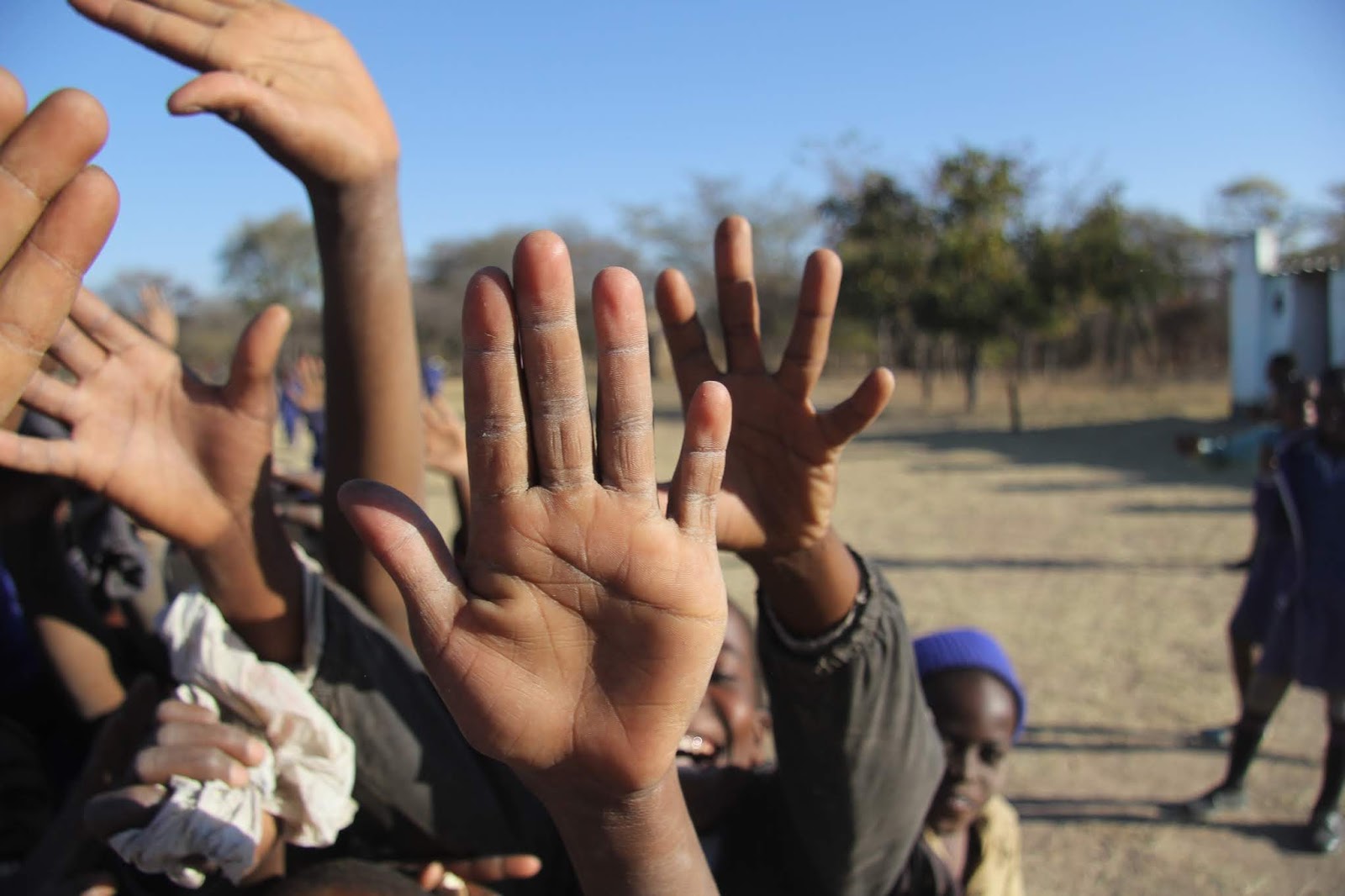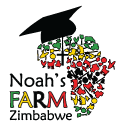A Day in the Life of Riverdale Primary School
Lee Ann Linam, Director of Advocating for Education, Noah’s FARM Inc.
During July 2018 and 2019 I had the privilege of joining the students and faculty of Riverdale Primary School, a locally supported school located in a rural area about 15 miles north of the major city of Gweru in Central Zimbabwe. I came as a volunteer for Noah’s FARM to bring lessons and materials on nutrition, hygiene, and agriculture to the nearly 250 students in grades K4-7, but I ended up learning some lessons myself on dedication, perseverance, and optimism in the face of hardship.
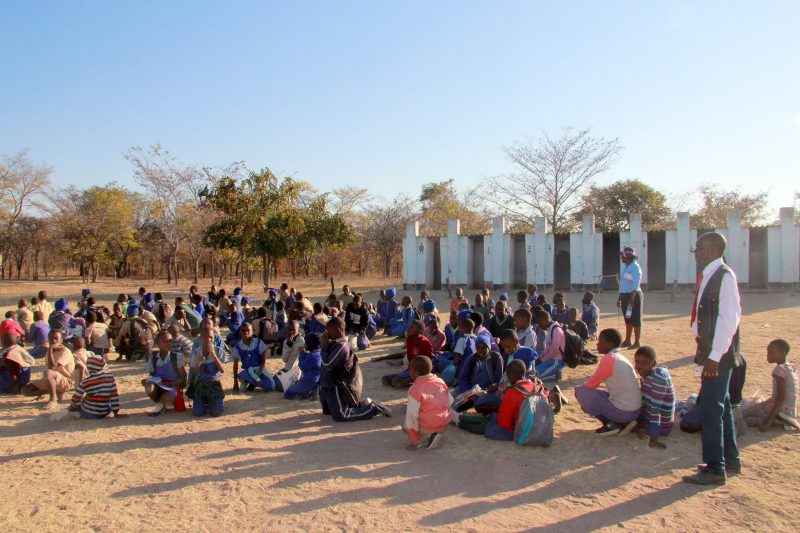
Morning assembly
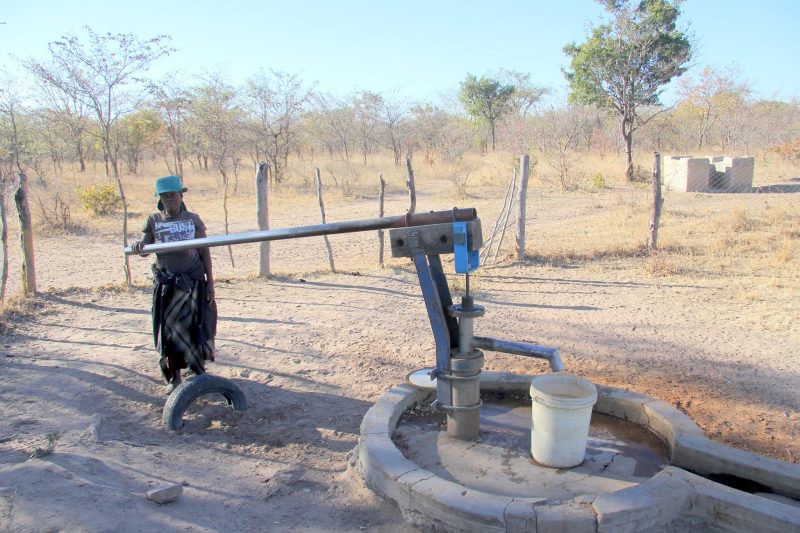
Unreliable water well with hand pump.
Eventually everyone heads to their “classroom.” There are four actual classrooms with walls, blackboards, cement floors, and desks and chairs, but no electricity and no heat or AC, as I discovered during a very cold snap during the dry season in July. Five grades share those four classrooms, some of which lack glass in the windows.
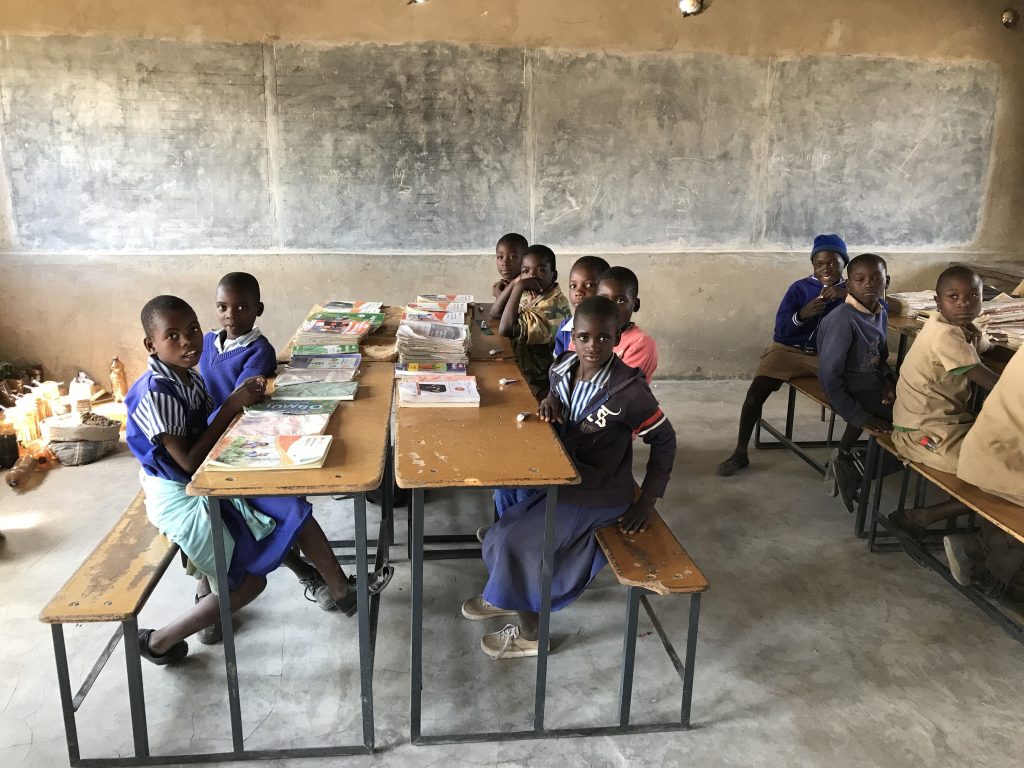
Grade 2 in their classroom shared with Grade 3.
As far as the remaining classrooms, the 6th grade meets under a shed with two open sides, 46 1st- graders meet on benches in a 10’ x 20’ living room that is part of a teacher’s cabin, and the ECD (K-4 and K-5) meet under a tree. The outdoor classes move their furniture in and out at the beginning and end of the day.
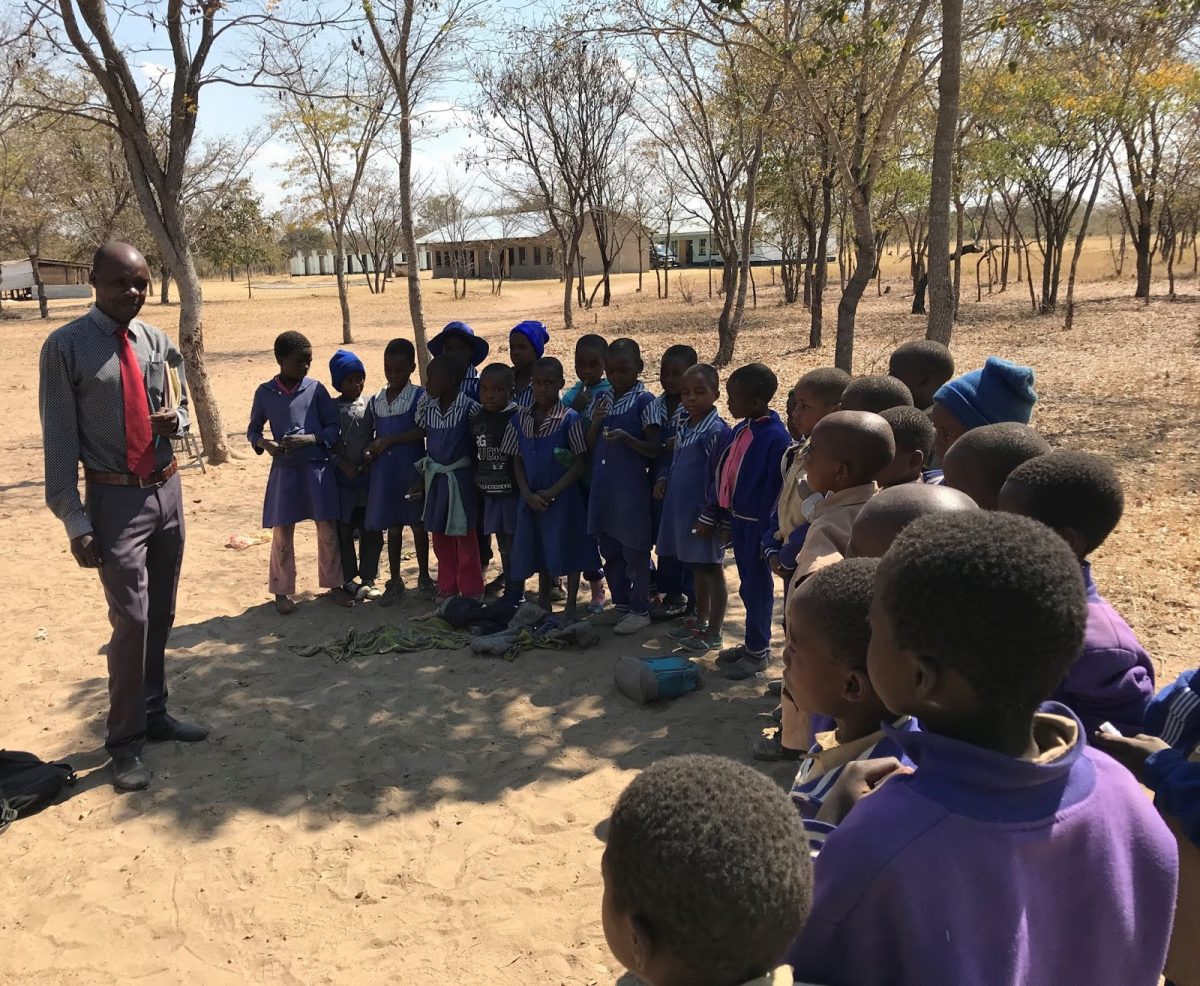
Grade 1 spilling out of their classroom into the outdoors.
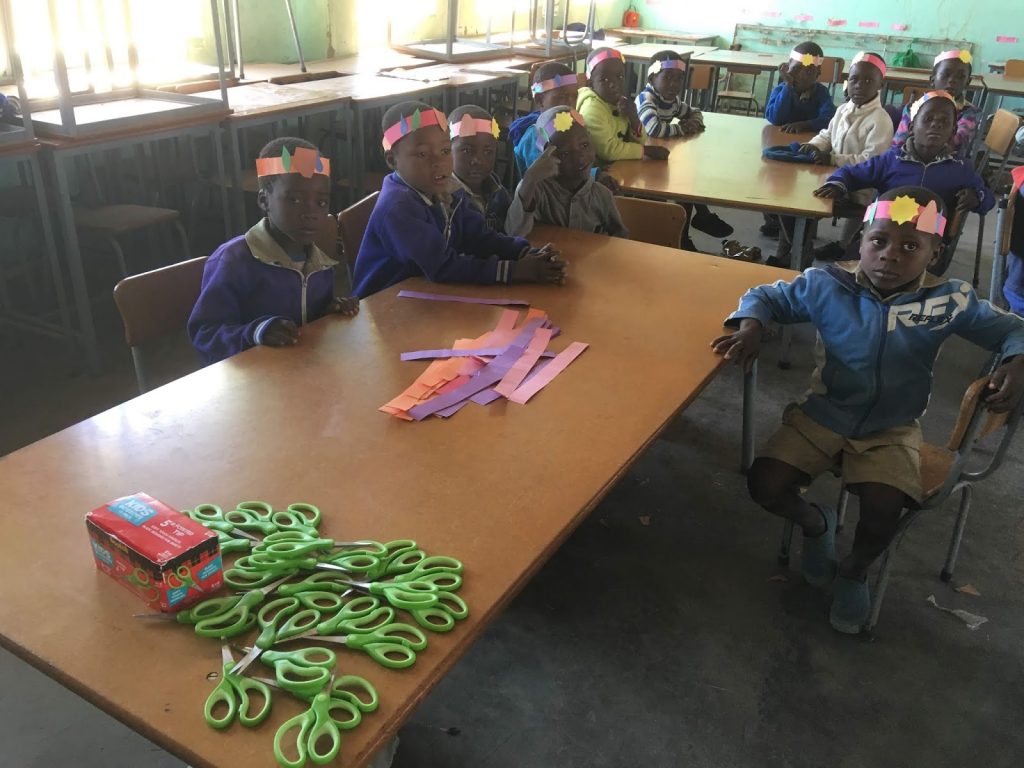
Students use donated supplies to make artwork teaching plant growth requirements.
The students get a 30-minute break at 10:00 and head outside to play. There’s a small playground built from old tires and scrap material for the ECD classes, but most students head to the athletic fields. There are goal posts for outdoor soccer, volleyball, and netball (a sport similar to basketball that is popular with girls), but there are no nets and few balls. True to form, kids find ways to play, often kicking tattered soccer balls about with bare feet, but teachers lament that there are no official balls or PE uniforms that would let the kids enjoy a more formal sports experience.
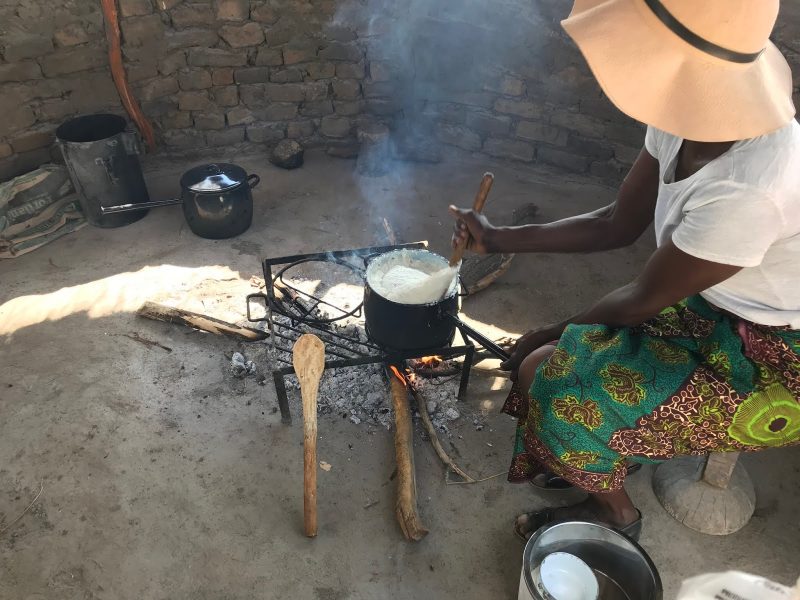
Parent volunteer making sadza for lunch.
After lunch, most students will be back in the classroom sharing textbooks, but some teachers seek their own ways to provide hands-on learning. Mr. Chemhere, the Grade 4 teacher, wants his students to learn about agriculture, but the school water well, which is heavily used by the local community, often goes dry, discouraging efforts to plant the school garden. Instead, he is growing vegetable plants in old bottles and bags in his classroom and having his students gather up leaves to build a compost pile for their ag projects. All the students, whose families are mostly subsistence farmers, know the outdoors, and, when I took them outside for a lesson about plant parts and soil components, they introduced me to local trees that provide edible parts to supplement the diets of sadza and covo. By the end of class we were all gnawing on pods of the paperbark thorn tree.
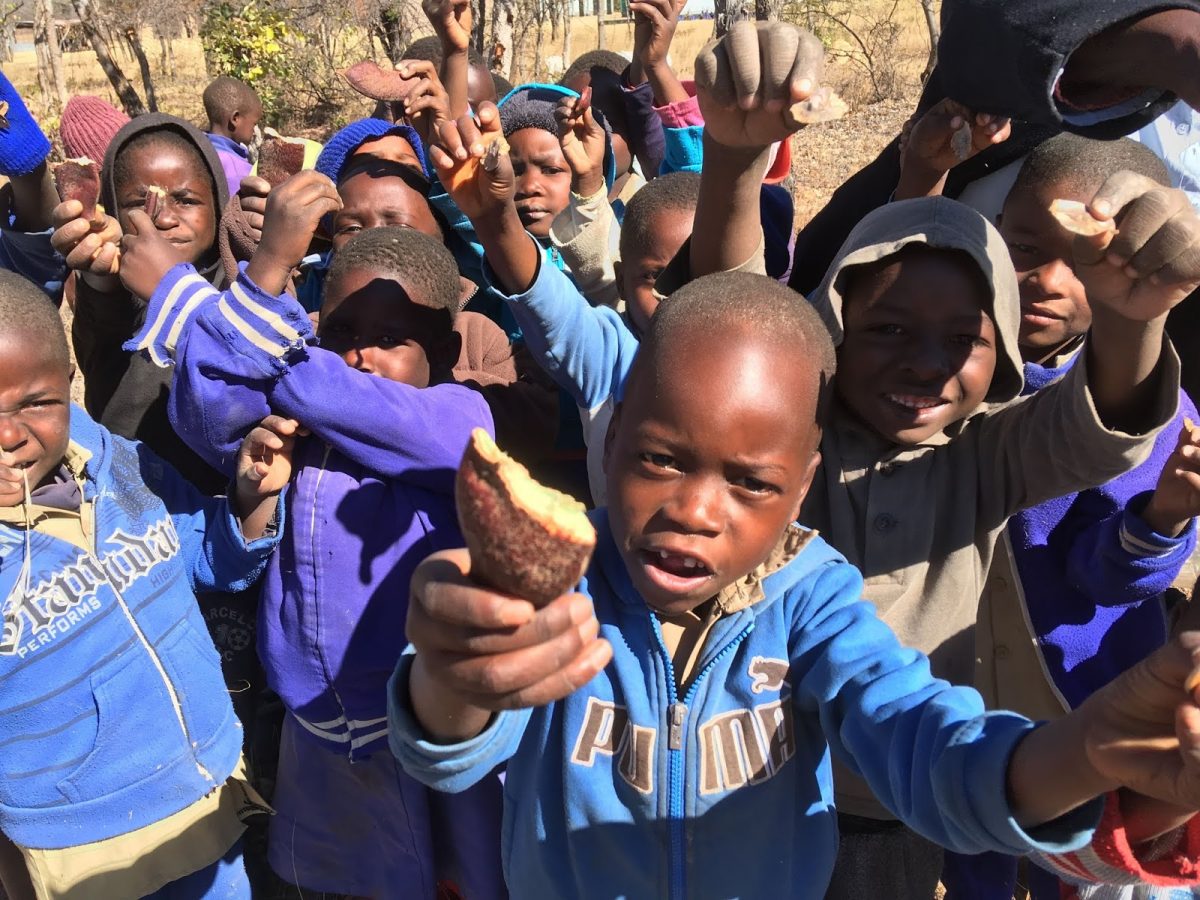
Learning about seeds with these wild edible pods often chewed by students.
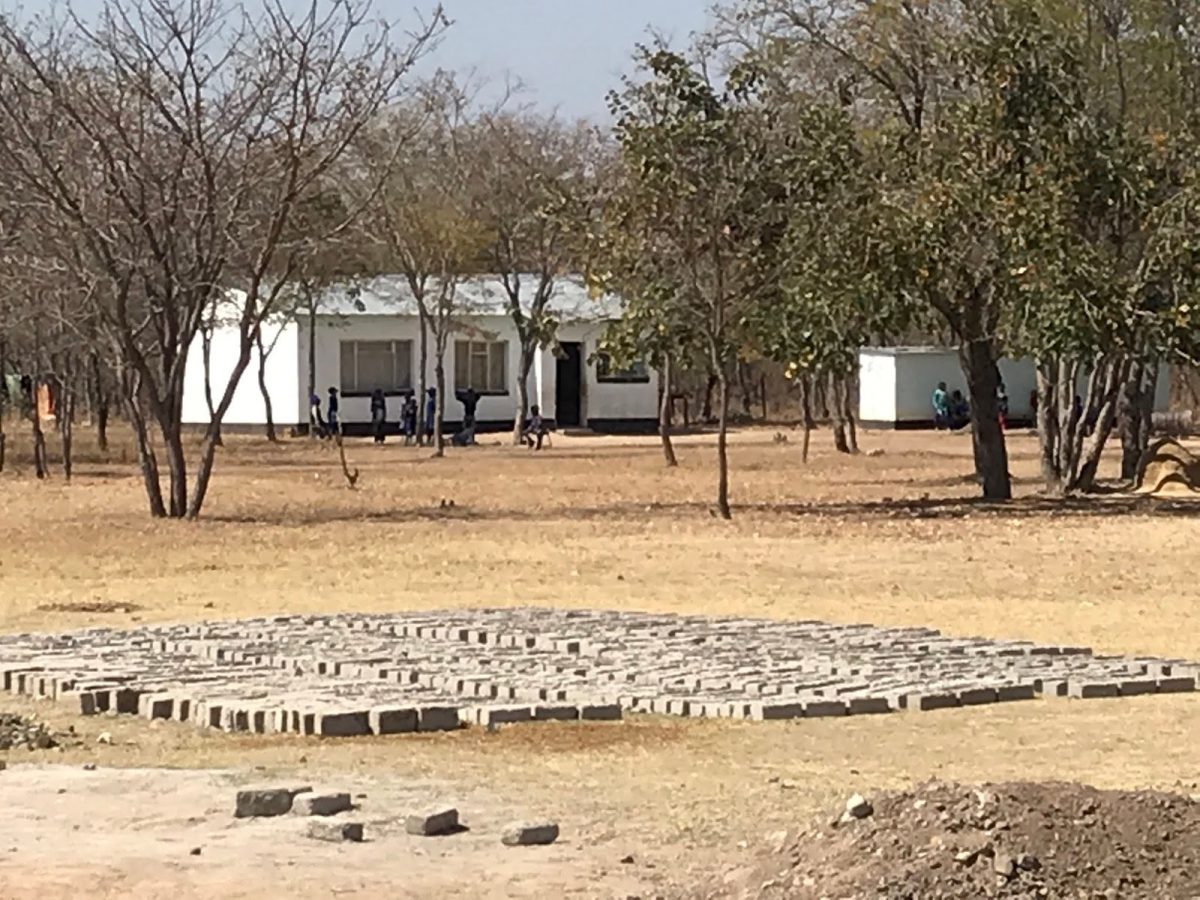
Bricks for poultry run being built by parent committee.

Lowering the flag.
Most of the teachers, however, do not head home. Miss Kusosa, a seasoned young teacher with lively eyes, a ready smile, and a petite frame, heads back into the classroom with some of the Grade 7 students who want to stay late to prepare for the national exams. The school year is broken into three terms, and at the end of each term, students in all grades must take standardized exams (Riverdale often borrows copies of the exams from a nearby school, as it lacks the resources to make its own photocopies). For the Grade 7 students, the exams are especially important, as they may open the door to a better opportunity at secondary school. Though the financial hurdles are huge—the nearest secondary school is about 10 miles away, so most students who hope to attend will have find a way to afford the expense of boarding there, and the lure of making a little money taking a job or even settling down and getting married is strong for these rural adolescents—Miss Kusosa is a teacher who seems to inspire her students to dream of attending high school. Universal secondary education is a goal that Zimbabwe’s government embraced in the years immediately following independence, but that dream has since slipped farther and farther away.
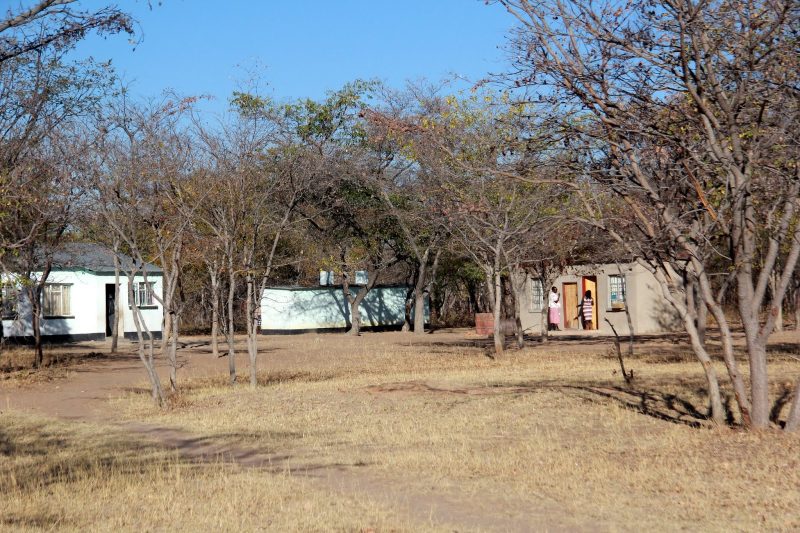
Teacher cabins, with latrine block in the middle.
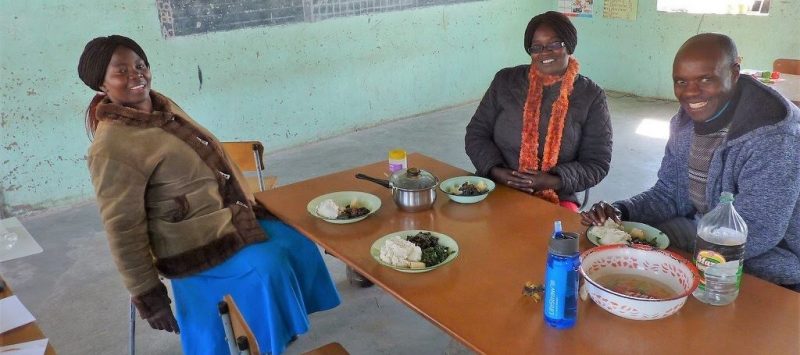
Teachers sharing a meal together.
I asked Mr. Sikula, a thoughtful, well-spoken parent who is secretary of the School Development Committee what he saw as some of the primary school needs. The answers spanned from major challenges (another classroom building and teacher cabin) to moderate challenges (new water well, more textbooks, reading books, and reference materials) to heartbreakingly simple challenges (feminine hygiene items so that older female students do not stay home, miss 25% of class, and perhaps eventually drop out of school simply because of embarrassment). His last response brought tears to my eyes. This is a need we can meet, and I committed Noah’s FARM to partner with ongoing efforts in southern Africa, such as Days for Girls (https://www.daysforgirls.org/), to supply students with sanitary hygiene items in the communities in Central Zimbabwe where the Church of the Nazarene is already working. Reusable kits locally produced for Days for Girls cost about $15/student. But I think we can dream bigger, too. In South Africa a literacy program called “Rally to Read” in similar rural schools aims to provide each teacher with a “library in a box” (http://www.rallytoread.co.za/). The protective box is full of textbooks, reading books, and other resource materials and has resulted in significant gains in test scores and literacy in the schools where implemented. Supporters can invest in large or small segments. Each classroom library would cost about $4,000; however, each book costs only about $10. For the big needs Noah’s FARM will be approaching bigger funders, such as foundations, embassies, and NGOs, in the coming year to seek help to meet infrastructure needs first at Riverdale, and then ultimately in other communities where we are working.
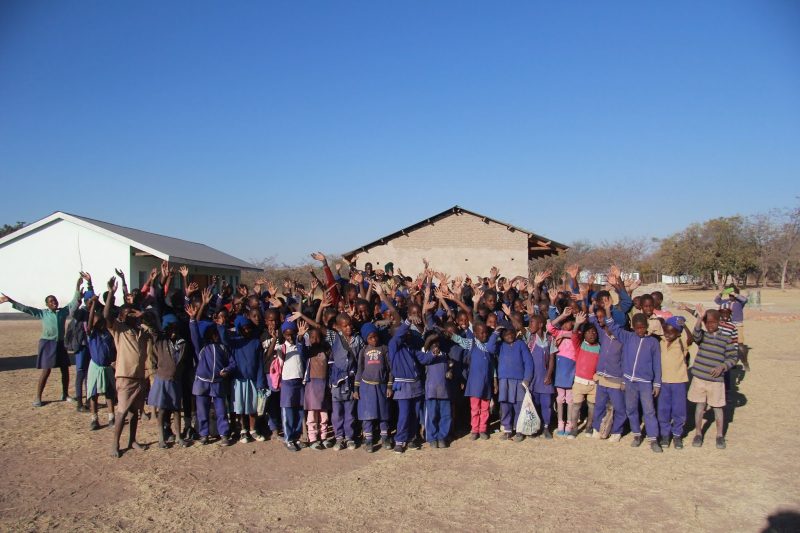
Students at Riverdale Primary School
Students arrive at Riverdale Primary at 8:00 a.m. for the opening assembly, where, seated on the ground dressed in tatters and tokens of the blue and khaki school uniform required for Riverdale, the students observe the raising of the Zimbabwe flag and open their day in prayer. Then a small group of students is sent to the hand-pumped water well, about 200 yards across the hard, dry athletic fields, to fetch water for the hygiene facilities consisting of “improved” latrines (open stalls with a concrete floor with holes feeding into pits underneath) and “tippy-taps” (a recycled jug—sometimes cooking oil, sometimes motor oil, sometimes pesticide—with holes and ropes designed to be operated by foot to enable hand-washing). Sometimes the tippy-taps are in working condition; sometimes they are not.
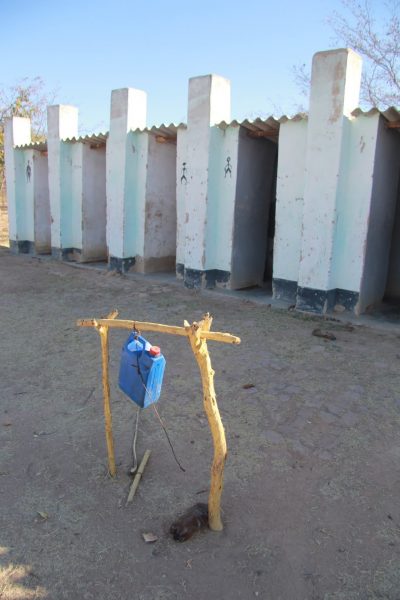
Latrines and tippy-tap for hand-washing.
This one is made from an oil jug.
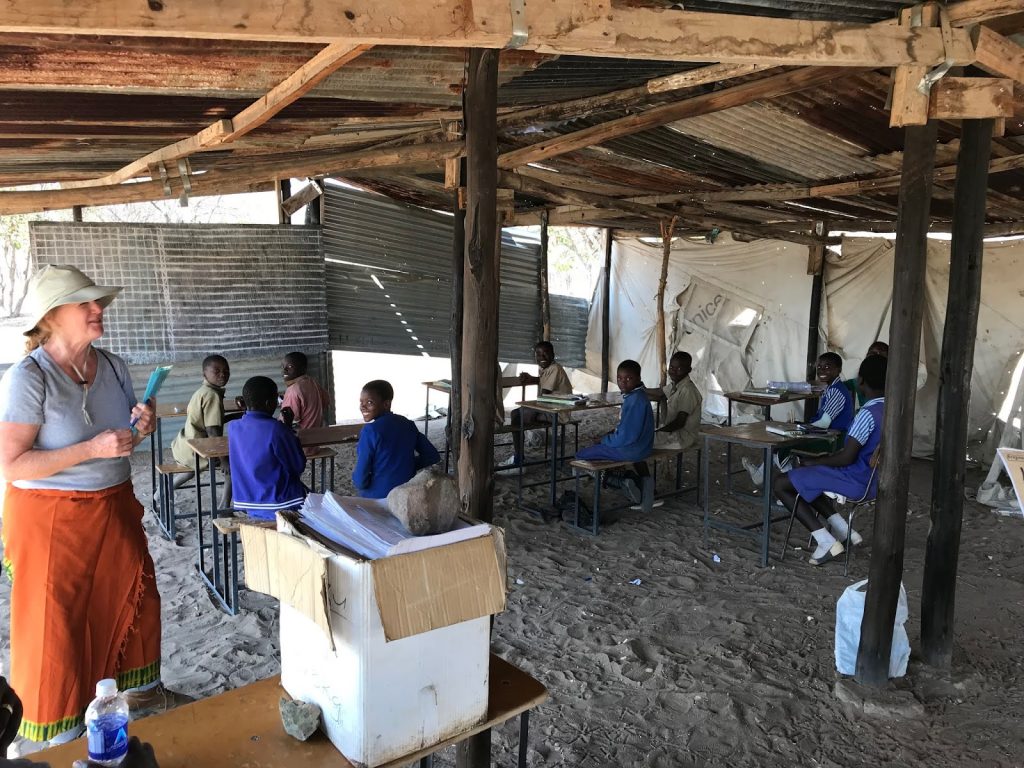
Grade 6 meets under this shed with two tarp walls.
Once in the “classroom,” students in each grade follow a state- specified curriculum that includes up to nine subjects for each grade drawn from English, local language (Shona or Ndbele), Mathematics, Science, Agriculture, Heritage (Social Studies), Religious and Family Studies, Visual and Performing Arts, Physical Education, and Integrated Computer Technology. Riverdale can only afford textbooks for a portion of those subjects, and the average ratio is one textbook for every 8-10 students. The school has few early reader books (far from enough for each young reader), and K-4 and K-5 have no books. Some teachers try to explain everything from the blackboard. Others place a book in the center of the table and let 6-8 students gather around the book to follow along. Others simply rotate the books among the students throughout the day—letting them essentially teach themselves for each subject. Answers must be written in composition books that the students must buy in this cash-strapped community, with pencils and pens that the students must provide. In an environment where the essentials are so scarce, complementary items like scissors or glue or construction paper are absent, as I learned when teaching 1st-graders to cut and paste for the first time with supplies provided by Noah’s FARM supporters. Facing a shortage of supplies and textbooks, it is not surprising that the school has been forced to forego the arts curriculum in its classrooms, but, in a desperate effort to address modern educational priorities, teachers attempt to teach the ICT (computer) curriculum by reading from textbooks.
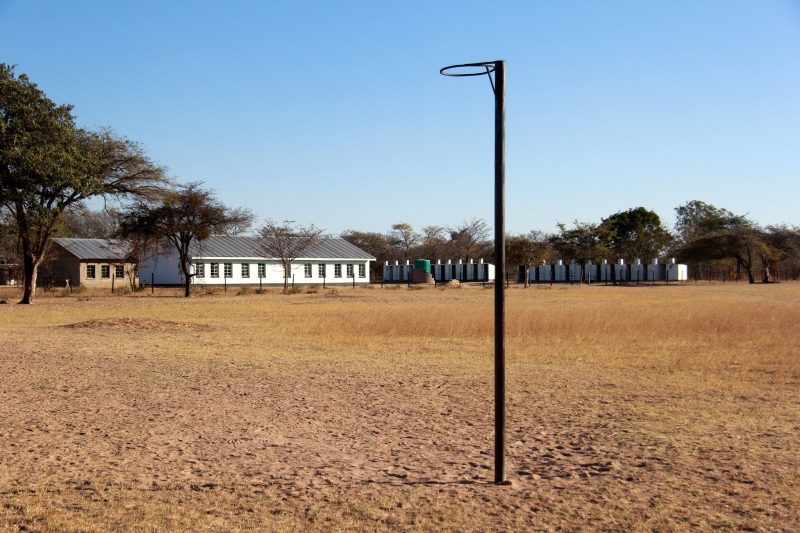
Netball “court” with school in the background.
After a time back in the classroom, students break for lunch from 1:00-2:00 p.m., while ECD students head home for the day. Lunch is available for $1 Zimbabwe/week (about $0.15 US), but many families, who all must pay school fees of about $7 US/month, cannot afford the extra fee. In truth, many students cannot afford the school fees, and the school administrators walk a fine line between pressuring parents to provide the funding the school needs to operate and encouraging everyone to send their children to school even if money is not available. Students who can afford to buy lunch bring their own plates to enjoy the meal prepared by volunteer parents. Monday is sadza and covo (essentially grits and cooked kale). Tuesday is sadza and covo. Wednesday is sadza and covo. Thursday is sadza and covo. Friday is…well, you get the idea…despite their nutritional limitations, sadza and covo are Zimbabwe staples.
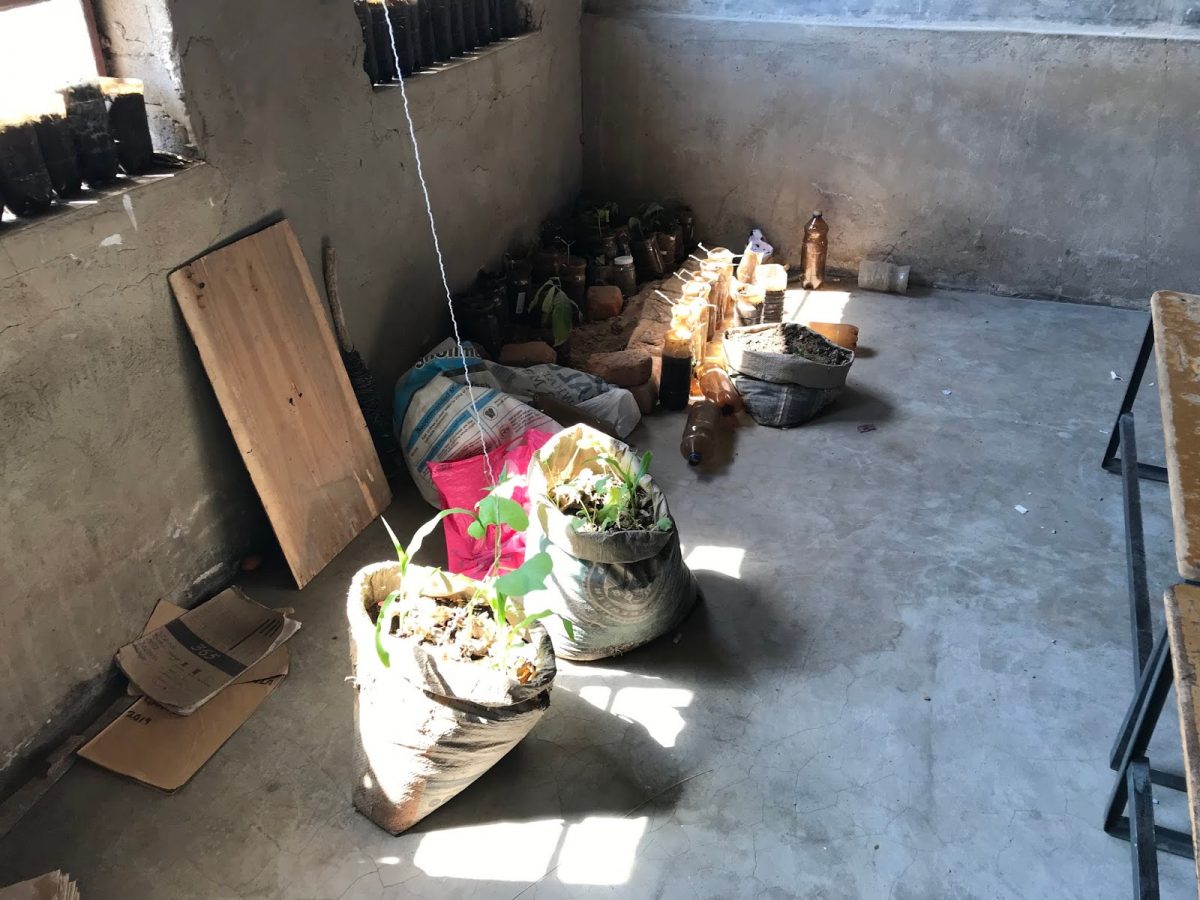
Classroom agronomy projects.
Teachers plod through lessons the rest of the afternoon, with the exception of Mrs. Mposi, the headmaster who also teaches 2nd and 3rd grade. The provincial educational office is constantly contacting her to come into town to attend a meeting, file paperwork, etc. Without transportation, Mrs. Mposi must try to flag down a ride on the rough gravel roads to travel the 15 miles into town. It takes her away from the classroom, but the provincial office is insistent and rife with paperwork, so other teachers try to step in and help cover for her students. Even when not called into Gweru, Mrs. Mposi must tend to other administrative duties such as meeting with the local School Development Committee, an elected body of parents who are actively engaged in to trying to improve the school. The SDC is the organizing force behind the school lunches and is also organizing volunteers to make bricks to build a poultry run so that broilers could be grown out to sell to support the school. Together, they and the school administrators make a strong team of advocates envisioning a better school for the community.
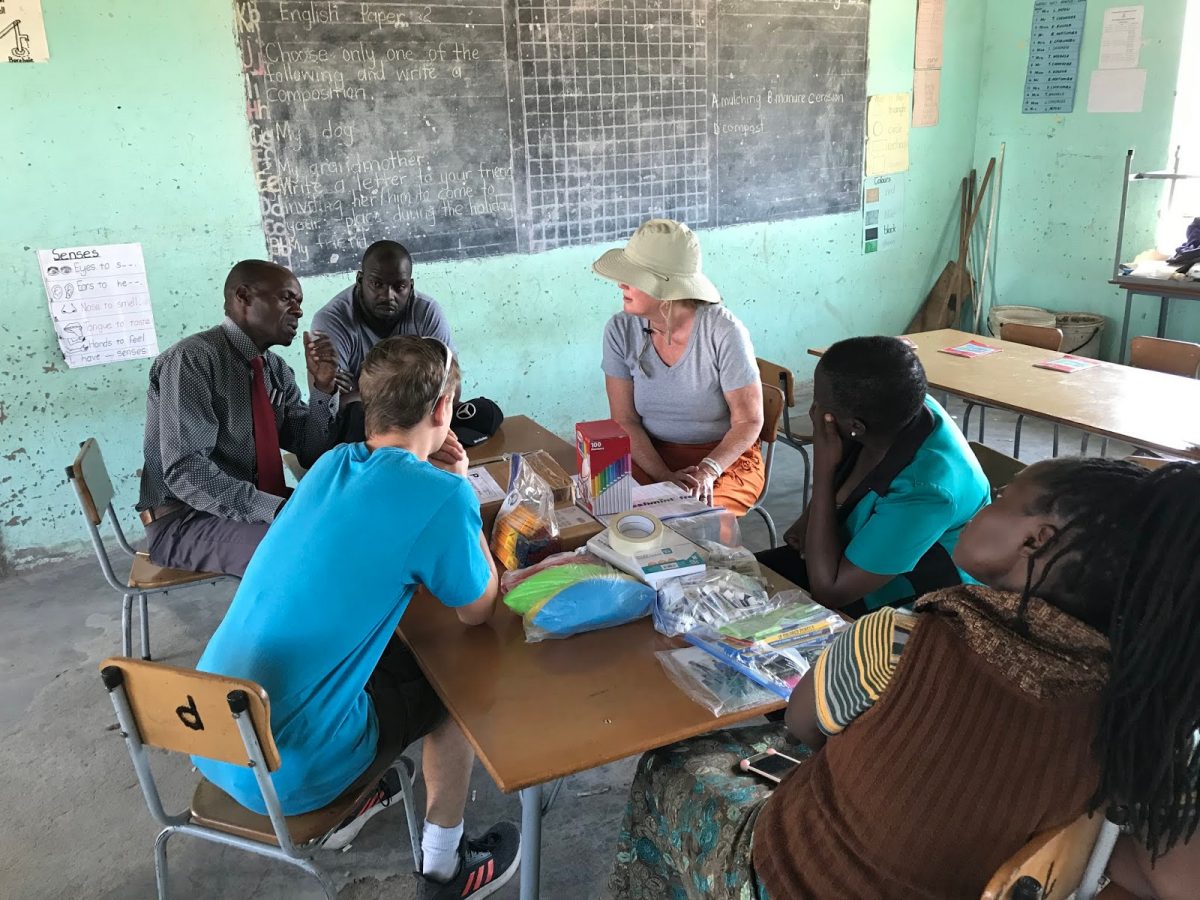
Teachers discussing the needs of the school.
At 3:30 students start clean-up activities for the afternoon, sweeping classrooms and fetching water in buckets to mop out the latrines, hoping that the water well is still producing enough water for the hygiene chores. At 3:45 everyone sits down on the ground for the lowering of the flag and the closing prayer, and, then much like children everywhere, when they are dismissed at 4:00, the mob of tan and blue sprint down the dusty dirt drive lined with a curb made of amber plastic soda bottles. Some are running only several hundred yards to reach home, but some will settle into a walk that takes them over three miles.
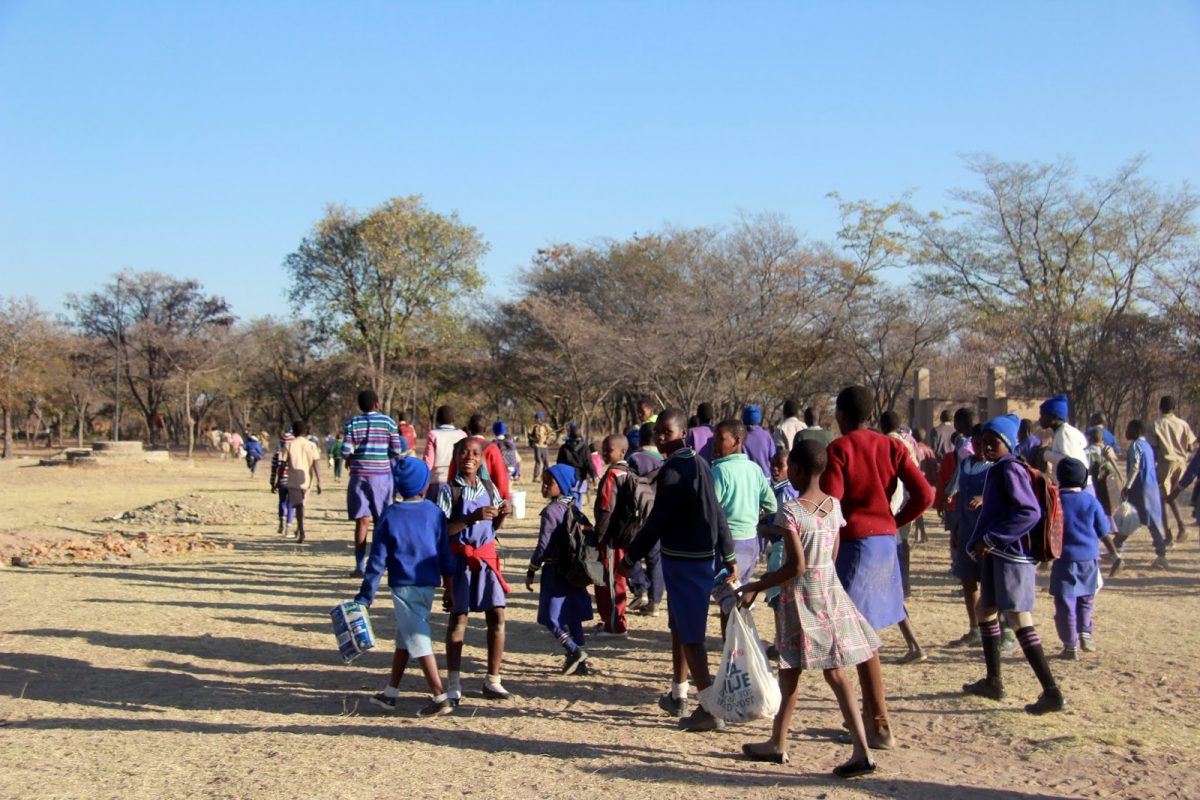
Students on their walks home.
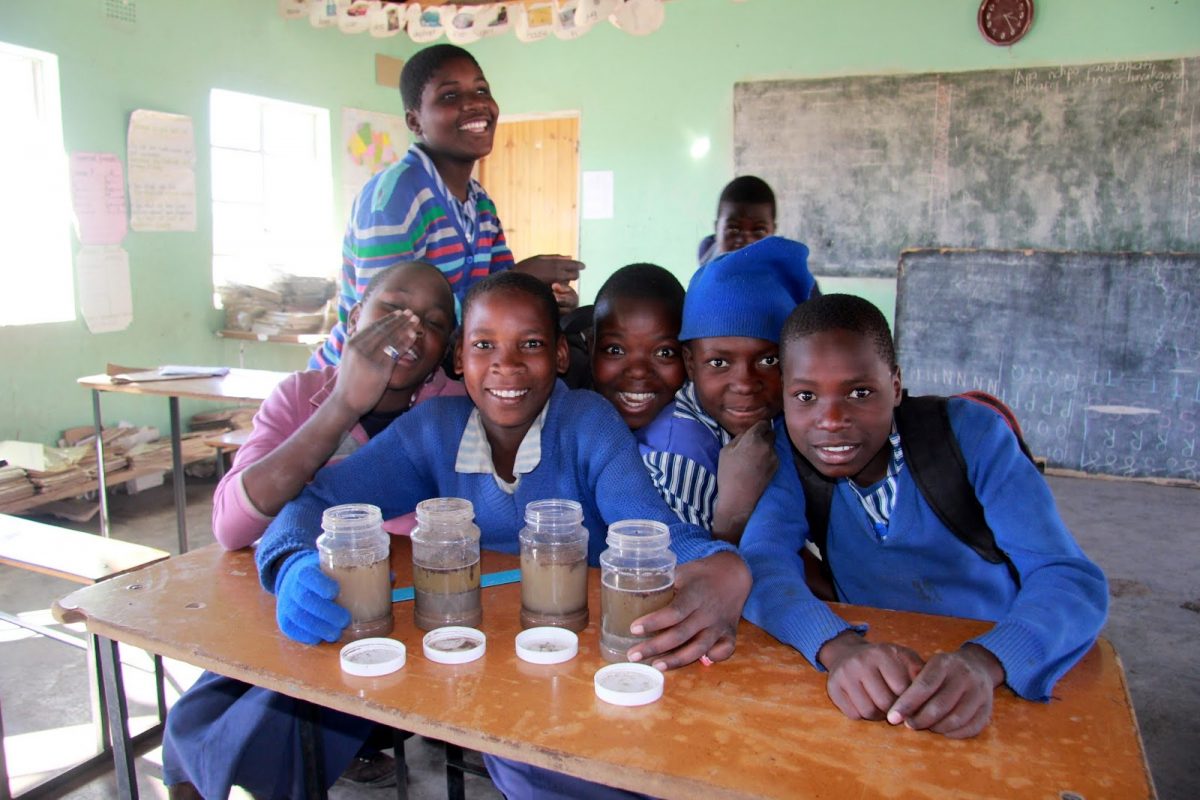
Grade 7 students looking at soils during their after-school studies.
Even after another hour or more of free tutoring, Miss Kusosa does not head home. Instead, she joins most of the other teachers in retiring to the teachers’ “cabins.” Five of the seven teachers at Riverdale Primary do not actually live in the community (land is allocated in the community based on a complicated system of family relationships, local governance, and political connection). These teachers, who all have degrees from teachers colleges, have families and homes in other cities or communities, but spend their week living on the school grounds, where each teacher has a tiny unfurnished bedroom. Like the school, the teacher bedrooms have no running water, no electricity, no inside bathrooms, no heat, no AC. The teachers build a close camaraderie spending their entire week together, often sharing a meal of peanut butter rice or kapenta (tiny stewed fish) or mopane worms (caterpillars), but their sacrifices are real—sleeping on the floor, cooking outdoors over a fire, hauling water across the athletic fields, and communicating with family by sharing small solar chargers to charge cell phones that receive signals only on the far end of the school property. There’s heartbreak, too. When I arrived this year the faculty were mourning the death of Grade 3 teacher, Mrs. Matenda, who passed away suddenly during the school year from complications from a stroke. Unexpected deaths among the young are an occurrence far too frequent in this country where the healthcare system is woefully insufficient. And, yet, each morning the teachers emerge from their tiny bedrooms, dressed professionally in slack or dresses, jackets, and dress shoes, and prepare themselves to try to inspire hope and learning in their young charges for another day.

Book collection for 46 Grade 1 students.
My first few days visiting the campus of Riverdale Primary School, I heard “How are you?” over and over again from clusters of curious, cautious children. Over and over again I would answer, “I am fine. How are you?” Amidst many, many giggles, I heard the response, “I am fine, madam.” (Okay, well, actually, I continued to hear that question every day I visited Riverdale Primary—not just at the beginning!) In the beginning, I would look at the dirty dusty faces, the torn uniform shirts, the bare feet, the thin arms, the snotty noses and think, “But you are not fine. You have so many needs.” Then, at some point I realized that I had stopped seeing the needs and just saw the students—I saw the pride in answering a question, the intrigue in viewing objects with a magnifying lens, the excitement in exploration and discovery, the individual talents, the eagerness to help. I stopped seeing the needs first and saw the children, all God’s children. I saw that, in their individual worth they were indeed fine. They just deserved more.
